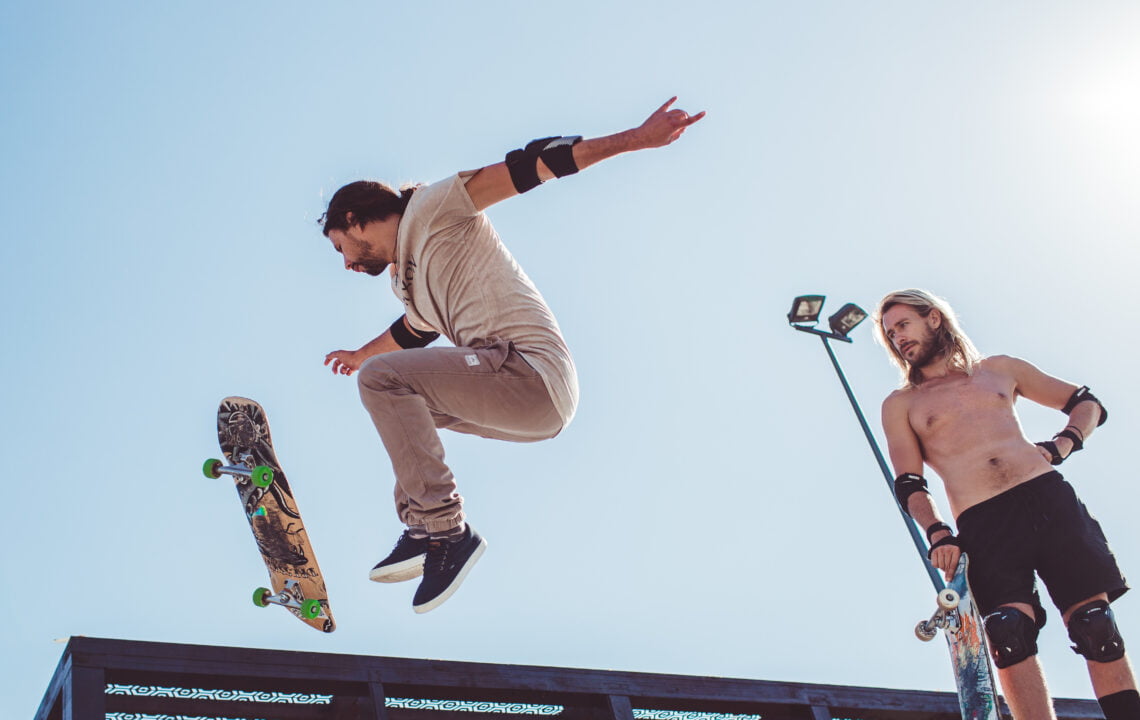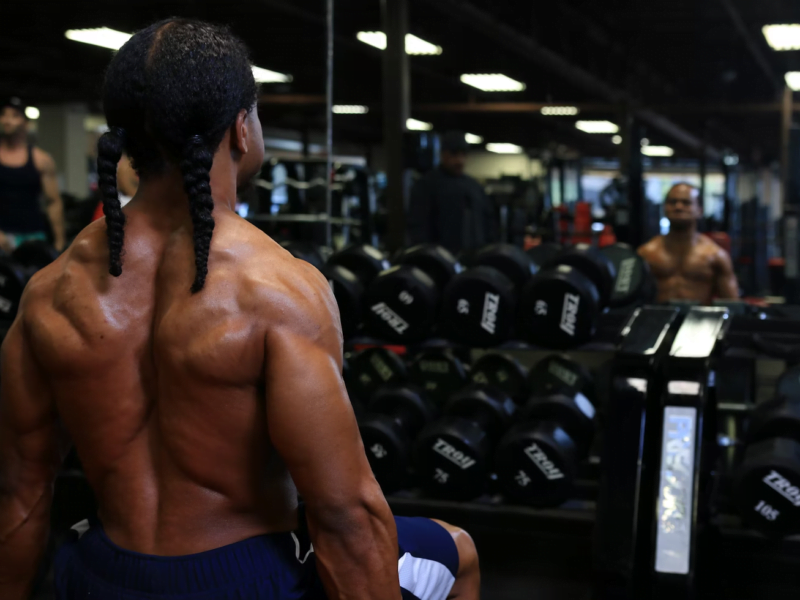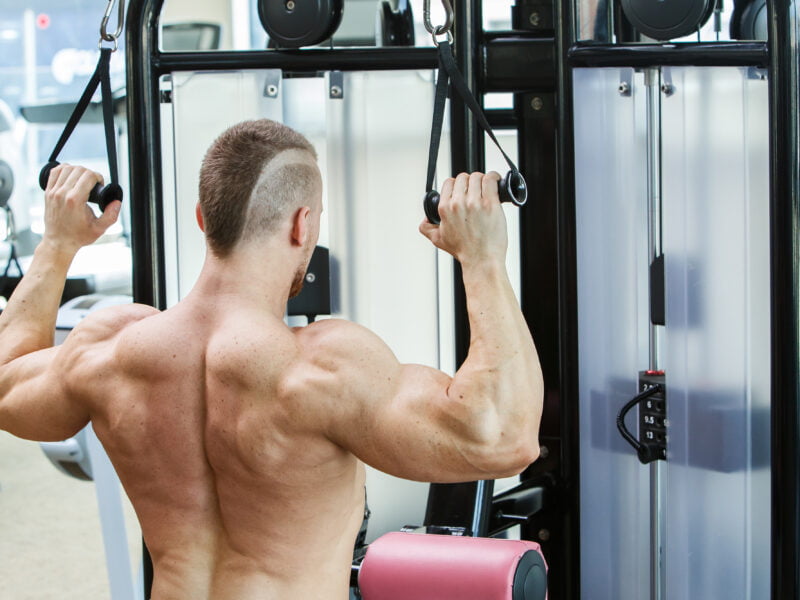Skateboarding is a cool activity that helps make your muscles stronger and keeps you fit. While it doesn’t bulk you up like gym workouts, skateboarding can still improve your muscle tone significantly.
For example, when you push the skateboard, your leg muscles, including your calves and thighs, get a good workout, improving their strength by about 15-25% with regular skateboarding sessions over a few months. Your core muscles, which help you stay balanced on the board, can become 30% stronger, making it easier for you to maintain balance not just in skateboarding but in other activities too. If you’re interested in learning about other muscles that are easy to build and maintain, we’ve got you covered.
Skateboarding also works your arms and shoulders when you’re steering or doing tricks, which can lead to a 20% increase in upper body strength. Beyond muscle strength, skateboarding boosts your endurance and flexibility, letting you do activities longer without getting tired.
Spending just 30 minutes on your skateboard several times a week can make a big difference in how strong and fit you feel. So, skateboarding is not only fun but a great way to build muscle and improve overall fitness.
Does Skateboarding Make You Gain Muscle?
Skateboarding can contribute to muscle gain, particularly in certain areas of the body, due to the physical demands of the activity. While it might not lead to significant muscle mass increase like traditional weightlifting, it can help in toning and strengthening muscles over time. Here’s how:
Legs and Lower Body: Skateboarding involves a lot of leg work, from pushing to maintain speed to executing tricks and maneuvers. This constant use of the leg muscles, including the quadriceps, hamstrings, calves, and glutes, helps in strengthening and toning them.
Core Muscles: Maintaining balance on a skateboard requires a strong core, which includes the abdominal muscles, lower back, and hips. Regular skateboarding can help in strengthening these core muscles, contributing to better posture and balance.
Upper Body: Although not as intensively as the legs and core, skateboarding also engages the upper body. Tricks and maneuvers require the use of arms and shoulders, whether for balance, steering, or performing grabs and flips. This can help in toning the upper body muscles.
For those looking to focus on their upper body strength, understanding the balance between biceps and triceps can be beneficial.
Endurance and Cardiovascular Health: Skateboarding can be a good cardiovascular workout, especially when done continuously over a period of time. It can improve heart health and endurance, contributing to overall fitness.
Flexibility: The dynamic movements involved in skateboarding require flexibility, which can help in muscle recovery and reducing the risk of injuries.
Balance and Coordination: As you improve your skateboarding skills, you’ll also enhance your balance and coordination, which are essential for muscle control and efficiency.
Is Skateboarding A Good Exercise?
Yes, skateboarding is considered a good form of exercise with several physical and mental health benefits. Skateboarding is an effective form of exercise that offers a multitude of physical and mental health benefits. As a cardiovascular workout, it can significantly improve heart health, depending on how vigorously and frequently it is practiced.
Skateboarding engages multiple muscle groups, enhancing strength in the legs, core, and arms through the various actions of pushing, balancing, and executing maneuvers. Additionally, it fosters improvements in balance and coordination, which are beneficial not just for athletic pursuits but also for daily activities, thereby reducing the risk of falls and injuries.
The flexibility gained from the dynamic movements involved in skateboarding is another plus, aiding in muscle health and preventing strains. Beyond the physical, skateboarding is a boon to mental health, offering stress relief, mood enhancement, and a boost in self-esteem through the accomplishment of learning new skills and tricks. It also provides a sense of community and belonging, as it can be a highly social activity, further contributing to overall well-being.
Moreover, being an outdoor activity, it encourages individuals to spend time outside, reaping additional health benefits such as increased vitamin D intake. However, it’s crucial to approach skateboarding with safety in mind, wearing appropriate protective gear and possibly seeking guidance when starting out, to minimize the risk of injuries.
How Many Calories Does Skateboarding Burn?
Moderate to Vigorous Skateboarding: More intense skateboarding, including doing tricks at a skatepark or street skateboarding, can significantly increase the calorie burn. In these cases, skaters can burn anywhere from 300 to 500 calories per hour, depending on the intensity of the activity and their skill level.

Is Skateboarding Harder For Girls?
The difficulty of skateboarding is not inherently determined by gender. Both girls and boys can face challenges when learning to skateboard, and these challenges are more related to individual physical fitness, balance, coordination, and practice rather than gender itself. However, societal and cultural factors can influence the skateboarding experience for girls in various ways:
Representation and Accessibility: Historically, skateboarding has been portrayed as a male-dominated sport, which might affect the visibility and encouragement for girls to participate. Lack of representation can make it seem harder for girls to envision themselves in the skateboarding community or find role models.
Social Support: Girls might find it challenging to skate in environments that are predominantly male and may feel intimidated or less welcome. Supportive environments that encourage participation regardless of gender can significantly impact one’s learning experience and progression in skateboarding.
Physical Differences: On average, there are differences in body composition and muscle distribution between genders, but these differences do not necessarily make skateboarding harder for girls. Skills in skateboarding are developed through practice, and physical strength can be built over time, regardless of gender.
Skateboard Design and Gear: Most skateboarding gear and boards are designed in a one-size-fits-all manner, but having equipment that suits one’s body size and strength can help in learning and performing. As the market evolves, more options are becoming available, making it easier for everyone to find suitable gear.
Psychological Factors: Confidence and the willingness to take risks can play a role in learning skateboarding tricks and skills. Cultural and social messaging that discourages girls from risk-taking behaviors can impact their approach to skateboarding. Encouragement, positive reinforcement, and seeing other girls and women in skateboarding can help overcome these psychological barriers.
Conclusion: Is Skateboarding A Good Way To Build Muscle?
Skateboarding is great for your body and mind, and it helps bring people together. Even though skateboarding used to be more popular with boys, things are changing. Now, everyone is welcome to join in. It’s not just about getting fit; it’s also about feeling good inside and making friends. Skateboarding is a fun way to stay healthy, grow stronger, and be part of a friendly group. It’s a special activity that helps you feel better in many ways, all while being part of a community that supports each other.



![Does Using Crutches Build Muscle: Complete Guide [Updated]](https://supeshealth.com/wp-content/uploads/2024/03/full-shot-smiley-man-training-800x600.jpg)

